When it comes to architectural marvels, the world is full of wonders. But some buildings stand out not just for their beauty or grandeur but for their sheer strangeness. From gravity-defying structures to mind-boggling designs, these buildings challenge our perceptions of what architecture can be.
Here’s a tour of ten of the most bizarre, yet fascinating, buildings around the globe.
1. Crooked House (Poland)
Nestled in the heart of Sopot, Poland, the Crooked House, or Krzywy Domek, is a structure that seems to have leapt straight out of a fairytale. Built in 2004 as part of the Rezydent shopping center, this 4,000-square-meter building was inspired by the whimsical illustrations of Polish artist Jan Marcin Szancer and Swedish artist Per Dahlberg. Its undulating lines and distorted shape give the impression of a house caught in a surreal dream, making it a must-see for anyone visiting Sopot.
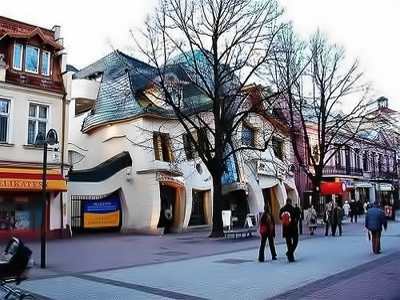
2. WonderWorks (USA)
At first glance, the WonderWorks buildings look like they’ve been flipped upside down by a massive earthquake. But this is no natural disaster—it’s an amusement park with a twist. Located in Pigeon Forge, Tennessee, WonderWorks is designed to make you question reality from the moment you step inside. The interior is just as disorienting as the exterior, with exhibits and attractions that challenge your perceptions. From an anti-gravity chamber to a hurricane simulator, WonderWorks promises an adventure in every corner.
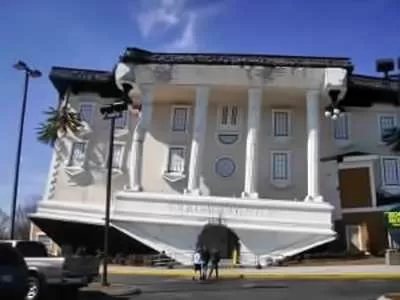
3. The Basket Building (USA)
In Newark, Ohio, you’ll find a building that takes the term “workplace” literally. The Basket Building, the former headquarters of the Longaberger Basket Company, is a seven-story replica of the company’s iconic basket—just 160 times larger. Completed in 1997, this colossal structure isn’t just a novelty; it’s a fully functional office building. Although the company has since moved out, the Basket Building remains a striking symbol of how far a company can go to brand its image.
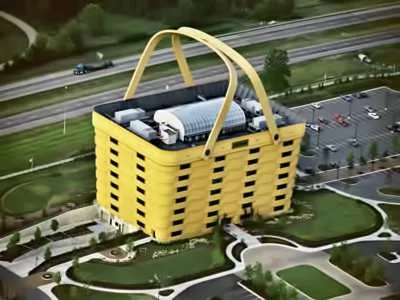
4. Mind House (Spain)
Antoni Gaudí, the mastermind behind some of Spain’s most iconic architecture, created the Mind House as part of the Park Güell project in Barcelona. Originally intended to be a private garden city, the project was never fully realized, but the Mind House stands as a testament to Gaudí’s visionary style. This whimsical building, with its organic shapes and intricate mosaics, is now a museum dedicated to Gaudí’s life and work, offering visitors a glimpse into the mind of a genius.
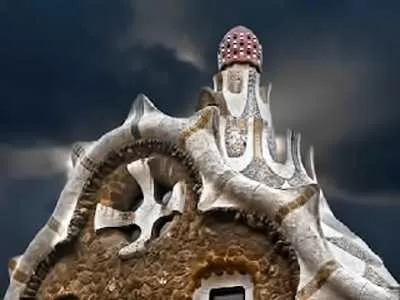
5. The Shoe House (USA)
In the small town of York, Pennsylvania, stands a house that’s literally fit for a giant foot. The Shoe House was built in 1948 by Mahlon Haines, a shoe salesman, as a promotional tool for his business. This five-story, shoe-shaped house is more than just a billboard; it’s a fully functional home complete with a shoe-shaped doghouse. The quirky design has made it a popular tourist attraction, and today, visitors can tour the interior and even rent it for special occasions.
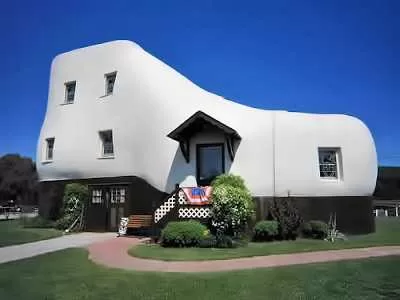
6. The Dancing Building (Czech Republic)
Prague’s Dancing Building, also known as Fred and Ginger, is a modern architectural marvel that stands out in a city known for its historical charm. Designed by architect Vlado Milunić in collaboration with Frank Gehry, the building’s fluid lines and dynamic curves are meant to resemble a pair of dancers. Completed in 1996, the Dancing Building has become a symbol of Prague’s cultural renaissance and is home to a restaurant with panoramic views of the city.
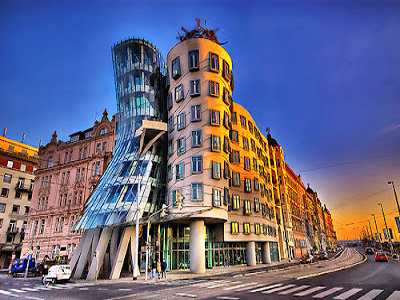
7. Errante Guest House (Chile)
The Errante Guest House in Chile’s southern region is a structure that defies conventional design. Perched on a cliff overlooking the Pacific Ocean, this building appears to be teetering on the edge of collapse. Its tilted angles and uneven floors give it a ramshackle appearance, but the design is intentional, meant to reflect the rugged landscape of Chile. Inside, the guest house offers a cozy retreat with stunning views, making it a popular destination for adventurous travelers.
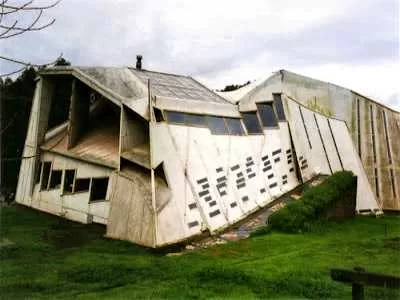
8. The Blur Building (Switzerland)
Imagine a building that isn’t solid but instead made of mist. That’s the concept behind the Blur Building, located on Lake Neuchâtel in Switzerland. Designed by architects Diller Scofidio + Renfro for the 2002 Swiss Expo, this structure creates a cloud of artificial fog using 31,400 water nozzles. As you walk through the mist, the building seems to dissolve into the surrounding landscape, blurring the line between architecture and nature. It’s an experience that’s both surreal and serene.
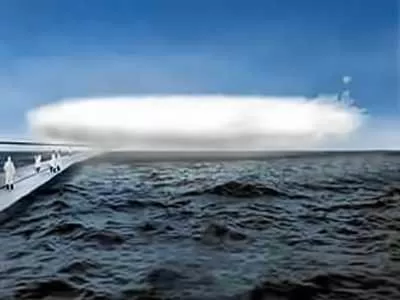
9. Corpus Museum (Netherlands)
Ever wondered what it would be like to walk through a human body? The Corpus Museum in Oegstgeest, Netherlands, offers just that experience. This 35-meter-tall building is shaped like a seated human figure and takes visitors on a journey through the body’s inner workings. Using state-of-the-art technology, the museum provides an immersive experience where you can see, hear, and feel what’s happening inside your body. It’s a fascinating blend of education and entertainment that’s unlike any other museum in the world.
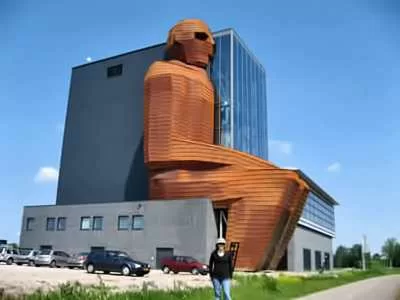
10. Cubic Houses (Netherlands)
In Rotterdam, Netherlands, architect Piet Blom took the concept of a house and turned it on its head—literally. The Cubic Houses are a series of cube-shaped homes tilted at a 45-degree angle, balanced on hexagonal pylons. Blom designed the houses to create an urban village within the city, where each cube represents a tree, and together they form a forest. The result is a neighborhood that’s as playful as it is innovative, attracting tourists and architecture enthusiasts alike.
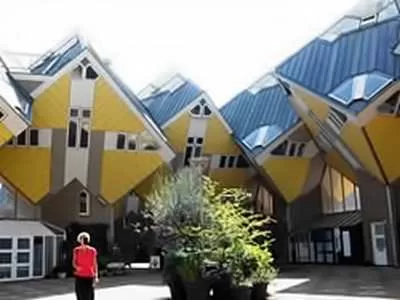
Conclusion
These buildings are more than just oddities; they are testaments to human creativity and the limitless possibilities of architecture. Whether they make you scratch your head in wonder or inspire you with their ingenuity, these strange structures are proof that the world of architecture is full of surprises.

